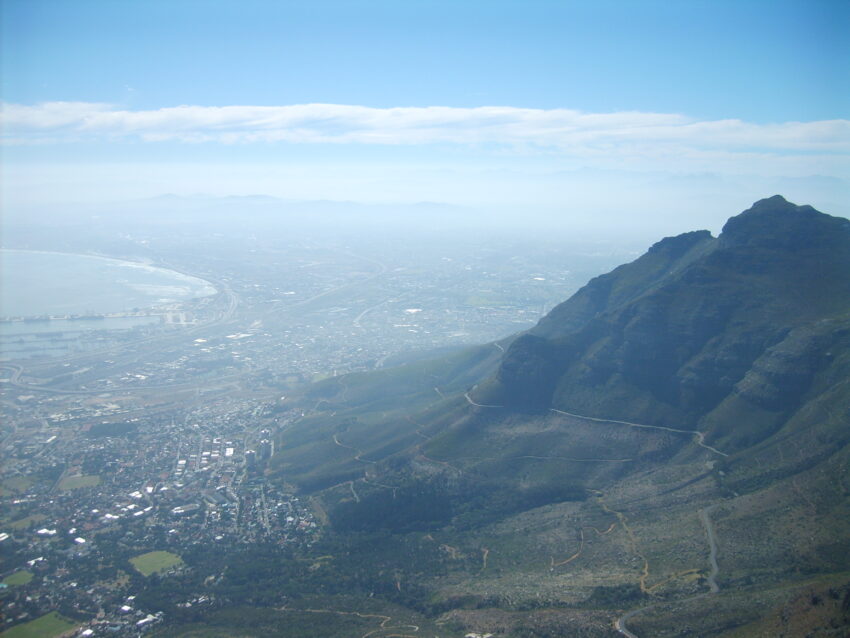“The wind is in from Africa, last night I couldn’t sleep.”
–from Carey by Joni Mitchell
It’s almost time for Indaba. South Africa’s Travel Indaba will take place this year May 9-11 at the Inkosi Albert Luthuli Convention Centre in Durban, South Africa. The return of Indaba every May reminds me of all the reasons I love South Africa and am constantly trying to get my American friends to go there and experience it.
Africa’s Travel Indaba is one of the world’s great travel trade shows, dedicated entirely to travel on the African continent. It’s been taking place every year since 1984, though it had to sit out the Covid years of ’20 and ‘21.
Indaba provides a great opportunity for anyone interested in travel in Africa to go to Durban, where industry professionals converge from all over the world for a few days of intense networking and gathering market intelligence, during the city’s sweet and warm autumn days.

Loving Durban
There are many reasons to attend Indaba, not the least of which is Durban itself. The third most populous city in South Africa, Durban is not quite as prominent on the travel map as Cape Town and Johannesburg. But it has its own unique charm and is as worthwhile as the other two, in my opinion.
As a reference point for Americans, if you compare Johannesburg to Chicago, and Cape Town to San Francisco, Durban might be compared to Miami, but more exotic and natural—more like Rio de Janeiro. It is a fine beach city on the Indian Ocean along Southern Africa’s east coast.
Durban has a rich history. Sitting on the Indian Ocean coast of Zululand, the city was established as a port by colonial Portuguese in 1497. It is still the largest and busiest shipping terminal in sub-Saharan Africa. It has its own blend of cultural and ethnic diversity, as distinct from that of Cape Town or Johannesburg. It has the largest Indian population of any city outside of India. An important part of the Ghandi story took place in Durban.
Like any great port city that has people, goods, and culture constantly streaming through, Durban has a lively cultural life, great restaurants and nightlife. Once you discover Durban, delicious discoveries go on and on.

Landscapes to Die For
Any first-time visitor from America attending Indaba would probably want to take advantage of the opportunity to visit Cape Town and Joburg while they are in the country. The cultural and historical richness of all three are really stunning in their own ways.
There are countless other places of high interest to explore in South Africa between and beyond the cities. Big Five Safaris are only the beginning of that list. Attending Indaba is a good way to begin an exploration of South Africa.
The natural landscape of South Africa is widely varied, from its Atlantic coast to its Indian Ocean coast, down to the southern tip of the Cape of Good Hope, so called because it gave Portuguese navigators hope that India could be reached from Europe by sea. They previously had no satellite photos to show them the route was there.
South Africa has colossal mountains, some standing right at the edge of the ocean, as in Cape Town’s magnificent Table Mountain. It has one of the world’s great wine lands, Stellenbosch, settled by the Dutch in 1680, with wine culture imported by French Huguenots who fled France to avoid beheading. People came to South Africa from all over the world for many reasons, and the resulting mix of international cultures is stunning. It sounds hokey, but it’s literally true that South Africa is a land of wonders.

Paradise Unveiled
South Africa was closed off from the world during the period of the apartheid regime, which started in 1948, when the National party took power with a minority of votes in parliament. Once installed in power, the party quickly moved to institute the bitterly oppressive, racist policies that became known as apartheid.
For 40 years, the country was under a kind of police-state lockdown with highly controlled media to keep information from moving in and out of the country. In that environment, tourism wasn’t much an industry. When the situation became ungovernable, the ruling party let Nelson Mandela out of prison and allowed the first democratic election in 1994. South Africa was opened to the world. The beauty that had been hidden away was exposed, and it is breathtaking.
The culture that developed behind that veil, through all the struggle and turmoil, fueled by the multiculturalism of the population, is rich indeed. The art, the cuisine, the fashions and, above all, the music of South Africa are unique, colorful and supercharged.
South Africa still vibrates with the joy of that liberation. It’s everywhere you go in South Africa, radiating from the people. The Black South Africans, the Indian South Africans and the Malay South Africans, who had previously lived under the shame of not being recognized as full-fledged human beings, were suddenly released from their shackles and proclaimed equal citizens of the republic.
With so much suffering and hardship in the world, so many places becoming more oppressive and autocratic, it’s a thrill to be in a place where the movement of the political culture has moved strongly in the other direction. Mandela’s dream of a Rainbow Nation has been realized, imperfectly of course, as is our own “more perfect union.” But it’s a huge improvement over what was before.
Mandela’s vision of a country that recognized the rights of all people was articulated in 1963 in his speech at the Rivonia trial, in which he was sentenced to life in prison.
“I have fought against white domination and I have fought against black domination,” he said. “I have cherished the ideal of a democratic and free society in which all persons live together in harmony and with equal opportunities. It is an ideal which I hope to live for and to achieve. But if needs be, it is an ideal for which I am prepared to die.”
To me, the story of South Africa’s liberation from apartheid, the legacy of Nelson Mandela, who curtailed the violent revolution that was gearing up in South Africa with a single speech in 1990, is the greatest reason of all to go to experience South Africa. It is everywhere. It is in the air you breathe. There is nothing like it anywhere else in the world.

Tourism: South Africa’s New Gold
In 2005, tourism surpassed gold as South Africa’s biggest industry. Unlike the wealth from gold, which stays in very few hands, the wealth from tourism benefits South Africans across the economic spectrum. It is an industry that gives many economically disadvantaged people a handle to pull themselves up to a higher standard of living. And South Africans have responded enthusiastically to the challenge, bringing energy and innovation into their enterprises.
Tourism constitutes 3.2 percent of South Africa’s GDP (according to Statista.com). According to WTTC’s Economic Impact Report (EIR), South Africa’s Travel and Tourism sector is forecasted to grow at an average rate of 7.6 percent annually over the next decade—significantly more than the 1.8 percent growth rate of the country’s overall economy.
Tourism is extremely important to South Africa, and you feel that at Indaba. Indaba is a wildly diverse population of people from around the world gathering with the common interest of promoting tourism, and the energy that results from the combining and combusting of those human elements is nuclear. Indaba is a huge party but, at the same time, South Africans take their tourism very seriously.
South Africa is now widely recognized now as one of the top aspirational destinations in the world. Aspirations don’t always materialize into action, but it still means a lot.
Of all the great travel destinations of the world, South Africa is one of the most attractive, as in magnetic, pulling people in by their heartstrings. People see scenic photos of mountain landscapes, ocean views, savanna scenes of lions and elephants, and the beauty is heartbreaking.
So that’s my recommendation. Go for it. Save up your money or vacation time, whatever it takes, and go there. Experience it, at least once.
 David Cogswell is a freelance writer working remotely, from wherever he is at the moment. Born at the dead center of the United States during the last century, he has been incessantly moving and exploring for decades. His articles have appeared in the Chicago Tribune, the Los Angeles Times, Fortune, Fox News, Luxury Travel Magazine, Travel Weekly, Travel Market Report, Travel Agent Magazine, TravelPulse.com, Quirkycruise.com, and other publications. He is the author of four books and a contributor to several others. He was last seen somewhere in the Northeast US.
David Cogswell is a freelance writer working remotely, from wherever he is at the moment. Born at the dead center of the United States during the last century, he has been incessantly moving and exploring for decades. His articles have appeared in the Chicago Tribune, the Los Angeles Times, Fortune, Fox News, Luxury Travel Magazine, Travel Weekly, Travel Market Report, Travel Agent Magazine, TravelPulse.com, Quirkycruise.com, and other publications. He is the author of four books and a contributor to several others. He was last seen somewhere in the Northeast US.



